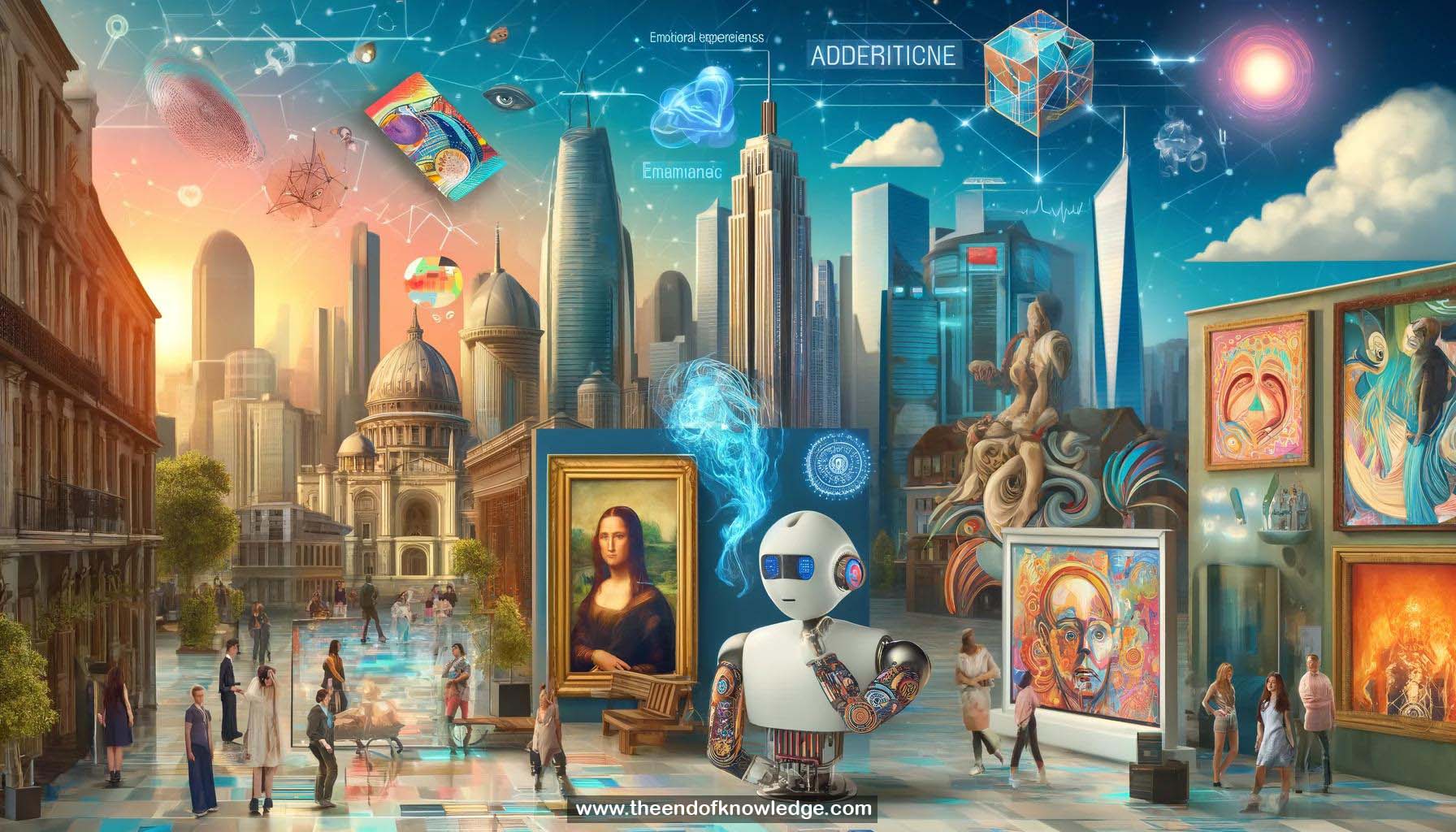 >
>
Concept Graph & Resume using Claude 3 Opus | Chat GPT4o | Llama 3:
Resume:
1.- The talk covers imagination-inspired AI for art and culture, focusing on creation and affective expression.
2.- Creative Adversarial Networks encourage GANs to produce novel art by deviating from existing style norms.
3.- The Wundt curve suggests novelty that is too high or low reduces appreciation of creative works.
4.- Style classification loss makes the discriminator aware of style norms. High entropy loss encourages the generator to deviate from them.
5.- Creative fashion GANs produced designs mixing elements like vests with pants in novel ways.
6.- Affective AI aims to build emotionally aware models that can effectively communicate about visual stimuli.
7.- The theory of constructed emotion proposes that emotions are constructed in the moment rather than simply retrieved.
8.- Experiences like fear can be enjoyable or not enjoyable depending on the context.
9.- The Artemis dataset pairs paintings with affective language captions focused on emotional experiences.
10.- Artemis captions are more emotionally descriptive compared to datasets like COCO.
11.- An interface was built to collect Artemis data, having participants select emotions evoked and explain them.
12.- The initial Artemis dataset was biased towards positive emotions. Artemis II aimed to correct this.
13.- For Artemis II, each original painting was paired with a visually similar one evoking a different emotion.
14.- This encouraged captions with contrasting emotional experiences for similar images, making models more sensitive to emotion-evoking details.
15.- Models trained on Artemis II showed a 20% gain in SIDO score and were preferred by humans 73% of the time.
16.- Message passing in CreAtiVe Adversarial Networks models deviation as a random walk across art style classes.
17.- Landing probabilities from the random walk are encouraged to be uniform, promoting deviation from style norms.
18.- CWAN produces more likeable images that deviate further from training data compared to StyleGAN models.
19.- CWAN can construct diverse emotional experiences in an unsupervised way based on human evaluations.
20.- Additional work explored generating paintings from textual descriptions of desired emotional impacts.
21.- INR-GAN can generate continuous images from text, allowing arbitrary resolutions and generation outside training image boundaries.
22.- Visual GPT leverages knowledge from GPT-2 to enable data-efficient image captioning when training examples are limited.
23.- A gating mechanism regulates the influence of GPT-2 weights to allow effective knowledge distillation.
24.- Visual GPT outperforms baselines when trained on 0.5%, 0.1% and 0.01% of data on COCO and medical report datasets.
25.- Applying techniques like Visual GPT to distill knowledge from language models could improve affective captioning in more languages.
26.- A video generation model was proposed capable of producing hour-long videos with 5% more compute and 50% better quality.
27.- The video model shows promise for enabling longer artistic AI-generated videos.
28.- Evaluation interfaces designed to collect emotionally contrasting examples help mitigate bias in affective datasets.
29.- Random walks in latent space provide an approach to modeling and encouraging deviation from existing norms in generative models.
30.- Distilling knowledge from large pre-trained language models is a promising approach for data-efficient affective captioning.
Knowledge Vault built byDavid Vivancos 2024